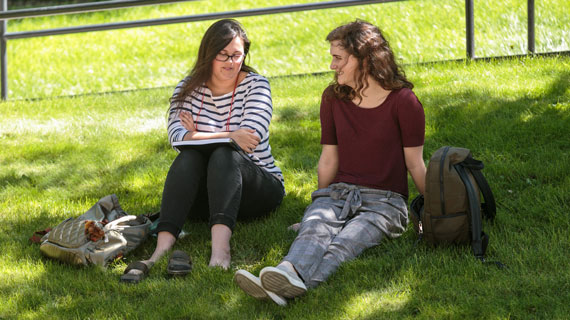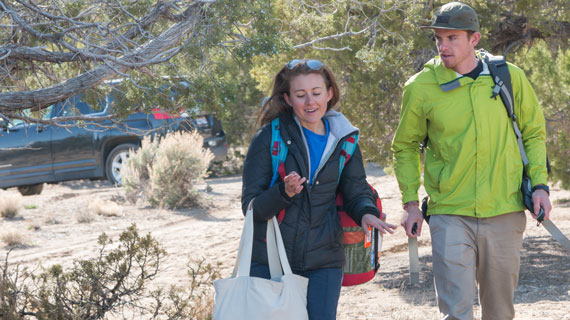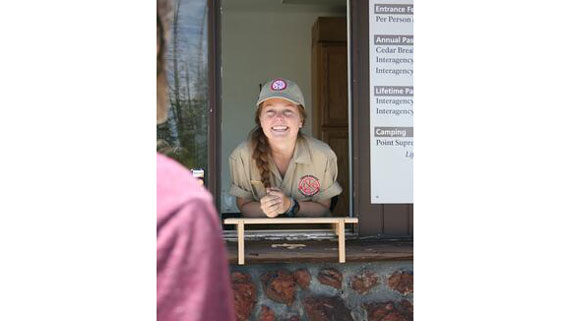Five Tips for Proper Trail Etiquette in the Great Outdoors
Posted: June 07, 2018 | Author: Kevin Koontz | Read Time: 4 minutes
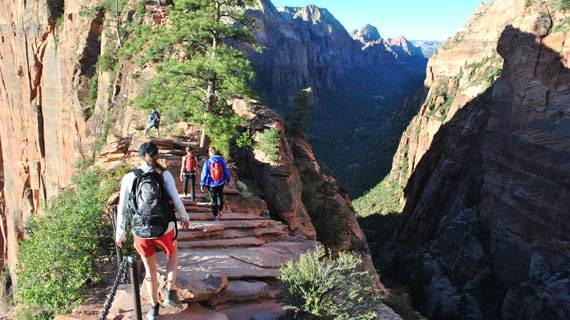 As the value and benefits of outdoor recreation become more recognized, we continue to see an upsurge in people flocking to public lands. Visitation to National Parks, State Parks, Forest Service lands, and Bureau of Land Management areas have steadily increased year after year. In 2017, southern Utah’s Zion National Park was the third most visited national park in the country with 4,504,812 recreational visitors (preceded only by Great Smoky Mountains National Park and Grand Canyon National Park). The intense popularity of these amazing landscapes means more bodies on the trails, which can be hard on the land, the agency managing the area, and fellow recreationists. To help protect these areas, here are a few tips on how you can help improve everyone’s experience while out on the trail.
As the value and benefits of outdoor recreation become more recognized, we continue to see an upsurge in people flocking to public lands. Visitation to National Parks, State Parks, Forest Service lands, and Bureau of Land Management areas have steadily increased year after year. In 2017, southern Utah’s Zion National Park was the third most visited national park in the country with 4,504,812 recreational visitors (preceded only by Great Smoky Mountains National Park and Grand Canyon National Park). The intense popularity of these amazing landscapes means more bodies on the trails, which can be hard on the land, the agency managing the area, and fellow recreationists. To help protect these areas, here are a few tips on how you can help improve everyone’s experience while out on the trail.
Know the Right of Way
When encountering other groups or individuals on a trail it helps to know who has the right of way. As a rule, downhill travelers should yield to uphill travelers (who are often working much harder to maintain momentum), bikers yield to hikers (unless it is specifically a trail for mountain biking), and everyone yields to equestrians (riders on horses). Groups of hikers should allow smaller groups, and individuals traveling faster to pass. Hikers that are standing still or need to sit down to take a break, should do so off the trail so that they aren’t impeding the movement of everyone else.
Keep it Down
For many people, being on the trail is a way to connect with the natural environment. They want to hear the sounds of wind blowing through trees, and the songs of birds, not people shouting to each other or the beat of some trendy new album. Hikers should speak in regular or even low tones, turn down (or off) the ring-tone on their cell phones, and those that do want to listen to their favorite artist should wear headphones for the sake of everyone else.
Pack it In – Pack it Out
Hopefully, we all want to leave the great outdoors as unspoiled as we found it. The 7 principles of Leave No Trace set a great standard for trail and backcountry ethics which practically everyone can support. However, sometimes hikers commit faux pas of which they aren’t even aware. One example of this is the careless disposal of biodegradable litter such as orange peels, banana peels, or sunflower seed shells. Just because these items are organic doesn’t mean that it is okay to just toss them anywhere. In the southern Utah dry desert, it can take more than two years for these items to break down, during which time it is just trail trash.
Another detail that needs to be considered is the uncomfortable topic of human and pet waste. Many popular trails (especially in narrow valley corridors and slot canyons) are becoming polluted by excrement and the oft accompanying “toilet paper bloom”. This type of pollution not only stinks, but can contaminate water sources, and spread disease to local wildlife and other hikers. At the very least hikers should carry an extra plastic bag to pack out used toilet paper. For areas where digging a cat hole isn’t an option, hikers should carry a WAG (waste, alleviation and gelling) bag or other type of toilet kit.
Stay on the Trail
A shortcut past some switchbacks or a hidden path to a secret viewpoint may look appealing, but these “social trails” are actually a big problem for land managers. Trail systems are designed to provide visitor access while at the same time supporting natural habitats without damaging the area. So, while some hikers may be annoyed by a winding and weaving trail, know that switchbacks are actually diverting rainwater in a way that won’t erode a deep rut into a mountainside. Additionally, hikers should walk in a single file through, and not around puddles and mud so as not to widen trails, which contributes to erosion and trail damage.
Don’t Influence the Wildlife
Most of the tips mentioned above are already partly for the consideration of wildlife. And while just about every outdoor enthusiast has heard the familiar admonishment to “don’t feed the animals” few seem to understand why. Feeding wild animals is actually harmful to them for a variety of reasons. For one, “people” food doesn’t have the nutritional value that animals need to thrive in their environments. Moreover, when animals are provided with food from humans those animals not only lose their natural fear of people, but can also forget their foraging instincts when food becomes sparse. Animals that have become dependent on human food and handouts are frequently a nuisance to their human neighbors and can often cause injury and increase the spread of disease.
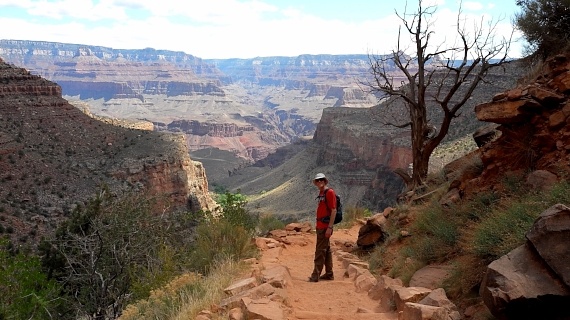 The characteristic that all of these tips share, and probably the most important, is to be considerate of others, both humans and animals. For many, the trail is a place to escape from the hum of city life, or push the limits of physical fitness. With over 100,000 miles of trails in the United States alone there should be room for everyone. Please join in the national effort to create and maintain quality outdoor experiences. All it takes is considering your actions and choosing to respect the land and others you meet along the path.
The characteristic that all of these tips share, and probably the most important, is to be considerate of others, both humans and animals. For many, the trail is a place to escape from the hum of city life, or push the limits of physical fitness. With over 100,000 miles of trails in the United States alone there should be room for everyone. Please join in the national effort to create and maintain quality outdoor experiences. All it takes is considering your actions and choosing to respect the land and others you meet along the path.
As the “University of the Parks” Southern Utah University strives to foster an appreciation for nature, the environment, and our public lands. To learn more, visit SUU’s Outdoor Engagement Center.
This article was published more than 3 years ago and might contain outdated information or broken links. As a result, its accuracy cannot be guaranteed.

